How to Identify and Attract a Tree Swallow
Updated: Jul. 25, 2024
Learn how to identify a male and female tree swallow. Find out about their nests, song, range map and what tree swallows eat.
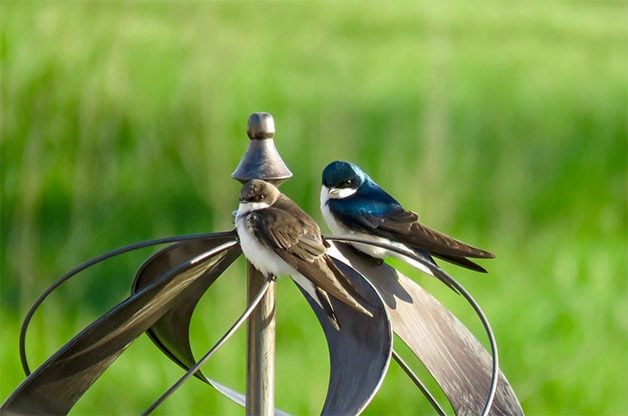
On This Page
How to Identify a Tree Swallow
Tree swallows are typically a straightforward enough bird to identify, even for newer birders. With shiny, almost iridescent teal upperparts and white below, they cut a striking figure as they swoop and dive through the skies after their preferred meal: bugs.
Audubon Upper Mississippi River’s Tara Hohman concurs. “Tree swallows are pretty easy and pretty simple,” she says. You’re going to be looking for white underparts, and more blue-green upperparts. Females, too, will have that blue-green, but it’ll be a bit more dull. Like other swallows, you’re looking for a small bird that’s more aerial and flying around, with more extended wings and a shorter tail.”
Look for a violet-green swallow in the West.
Nest and Eggs
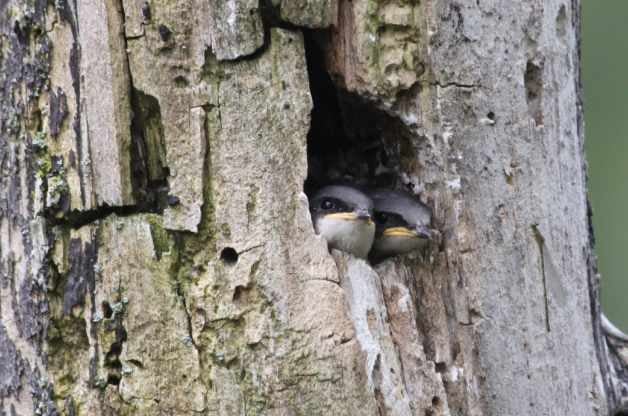
The female builds her nest in a cavity using grass, needles and feathers, and she lays up to eight white or pale pink eggs. Females have one or two broods each nesting season, and both parents help feed and protect young.
Nest boxes designed for bluebirds also attract this swallow, as Tara knows all too well. “We have about twenty bluebird boxes at the sanctuary where I work, and every single one of them is used by a tree swallow,” she laughs.” We’re right off the Mississippi river, too, so we’re the ideal habitat system to have them around.”
Learn more about swallows’ nests and nesting habits.
What Does a Tree Swallow Eat?
The hardiest swallow, tree swallows arrive early in spring and even overwinter in some localities. When insects are unavailable, they’ll feed mostly on bayberries; some wintering birds have also been seen picking seeds from pond ice.
“I wouldn’t necessarily call them feeder birds,” Tara says, noting that you’d typically be unlikely to find a tree swallow in your yard the same way you might more typical songbirds. “They like to be around water, and water and insects typically go hand in hand.” She mentions that a yard with a water feature or one that borders a river might bring in swallows, while urban or suburban birders might need to go elsewhere to spot them. “They’re not going to be coming in for things like seed or suet,” Tara says. “I haven’t seen them very often as a backyard bird.”
Don’t miss the 51 best spring bird pictures ever.
Tree Swallow Song
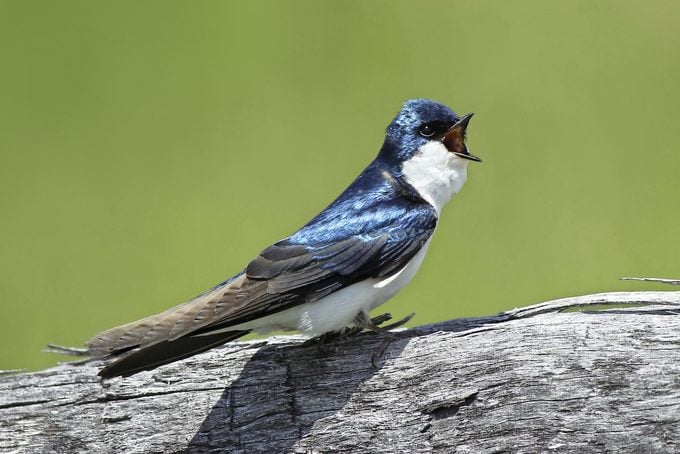
Typically an early-morning singer, a tree swallow’s song is a pleasant, gurgling chatter when in flight. “They have what some would describe as a clear, sweet, tittering or chirping call,” Tara says. “It’s similar to other swallows, but when you’re around it enough, it becomes distinct.”
Listen to the tree swallow’s song.
Bird songs provided by the Cornell Lab of Ornithology.
Meet the top songbirds in America.
Range Map and Habitat
If you live in the northern U.S., chances are good that you’ll be able to spot a tree swallow. They’re common summer visitors in the northern Midwest states, as well as the Pacific Northwest, the Northeast, and, less commonly, the Great Plains. When cold arrives, like many humans, they head to warmer climates. “They winter predominantly along the Gulf into Florida, but predominantly in Central America,” Tara says.
Cliff swallow vs barn swallow: spot the differences.
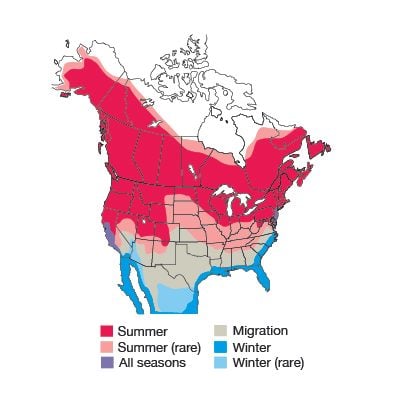
Range maps provided by Kaufman Field Guides, the official field guide of Birds & Blooms.
Ask The Experts
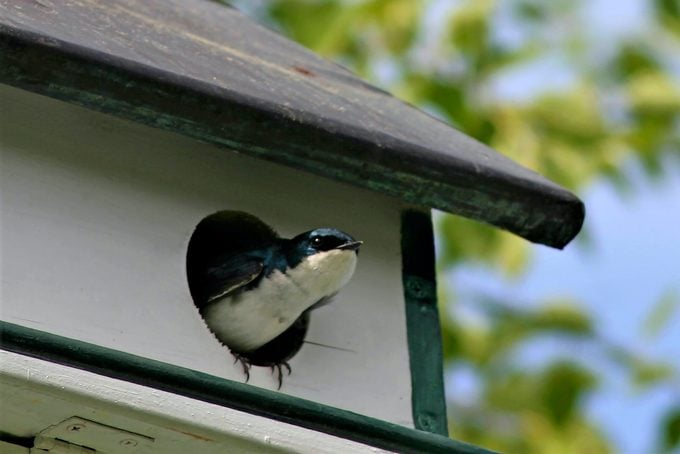
“I took this photo of a bird at a local park. Can you tell me what it is?” asks Birds & Blooms reader Cynthia Brennan of Glens Falls, New York.
Kenn and Kimberly Kaufman: Only half the bird is visible here, but that’s enough. The short, wide, flat bill suggests that this is a member of the swallow family. It feeds on flying insects, opening its mouth wide and scooping them from the air in flight. The fact that this bird is looking out of a birdhouse provides another clue. In eastern North America, the only swallows that nest in birdhouses are purple martins and tree swallows. The snowy white throat contrasting with the steel-blue top of the head makes this one a perfect match with the tree swallow.
Next, learn how to make a purple martin gourd house.
About The Expert
Tara Hohman is the conservation science manager for Audubon Upper Mississippi Flyway. Her scientific work has included point count surveys and avian monitoring for species such as golden-cheeked warblers, piping plovers, and more. She holds a Bachelor of Science degree in wildlife biology from Texas State University, and a Master of Science degree in environmental science and policy from University of Wisconsin – Green Bay.
Sources
- Audubon Field Guide, “Tree Swallow“
- Cornell Lab of Ornithology, “Tree Swallow: Overview“





















